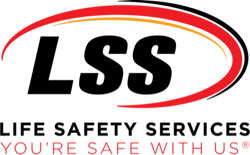
Fire-rated doors are an integral part of your building’s overall fire protection system. An operating fire door, just like a properly operating fire damper, is a key component to the compartmentalization of a building to stop the spread of deadly fire, smoke and toxic fumes. If the fire door assembly isn’t working properly, your facility is at risk.
.png?width=1640&height=924&name=Types%20of%20Doors%20(2).png)
In order for a fire door to do its job, it must be properly maintained to be in-compliance with the codes and standards. Reporting deficiencies and facility managers staying on top of routine maintenance and annual inspections are the most important things to remember when it comes to the complexity of fire doors.

Repairs
Fire doors have a well-thought-out design with hundreds of moving parts, which allows them to prevent fire and smoke from spreading throughout the building. Unfortunately, that means there is a higher chance for those parts to become deficient.
Labeling
NFPA 80 requires that all fire door openings (both doors and frames) have a fire rated certification label. Labels must be visible and clearly legible for the AHJ. In addition, labels should not be removed or painted over during the life of the building.
Inspections
NFPA 101 and NFPA 80 require the annual inspection of fire doors. LSS Life Safety Services® fire door inspection is one of the industry's most detailed. Inspecting more than 70 items on each fire-rated door assembly goes above and beyond the 13 major inspection points required by NFPA 80.
Commissioning
Fire doors are critical components of any building fire safety plans as they are designed to compartmentalize areas within the building and will prevent the spread of fire and smoke in the event of a fire. These safety components save lives and allow extra time for occupants to evacuate and remain unharmed from the flames and toxic fumes.

